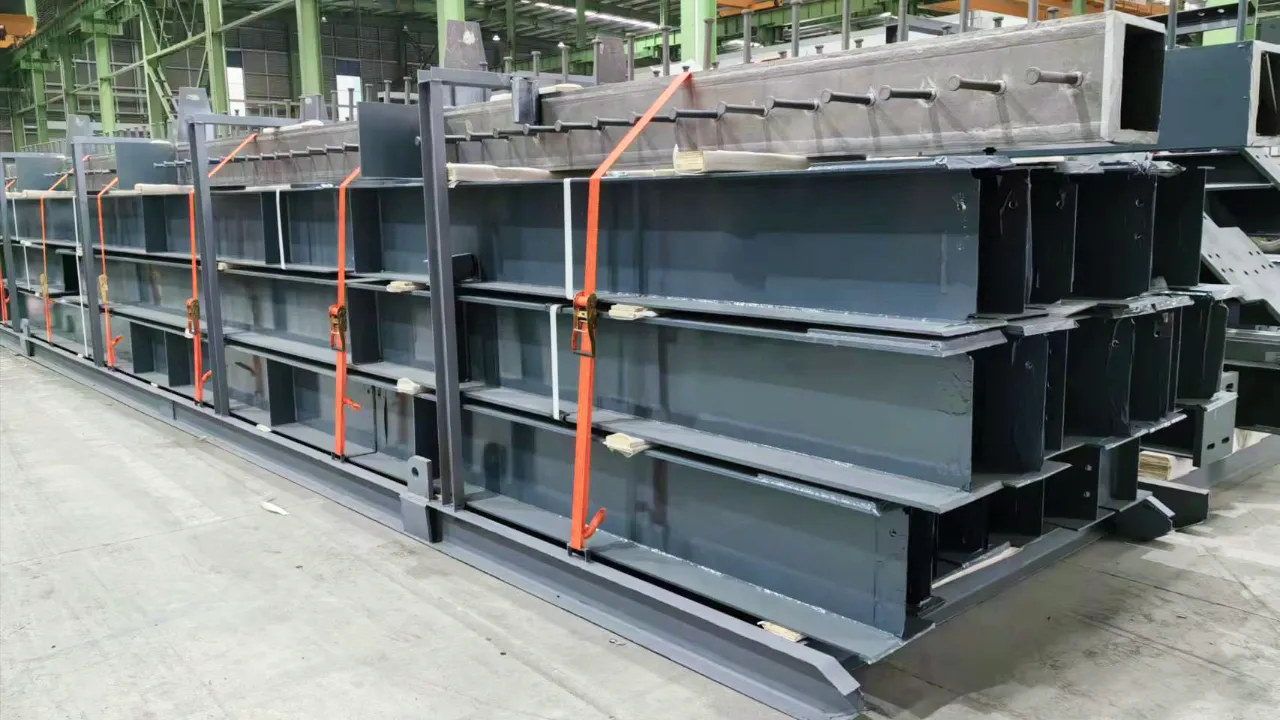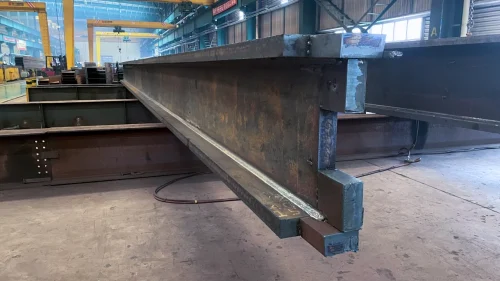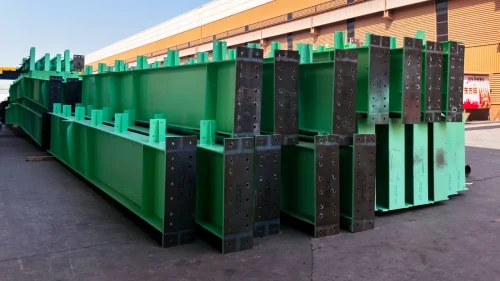Steel Columns and Beams for Multi-Story Building
Steel Columns and Beams for Multi-Story Building are using structural steel members shaped like the letter “H” (in cross-section) that is fabricated by welding together steel plates—rather than rolling them from a single billet like hot-rolled H-beams.
Structure & Composition
-
Flanges: The wide horizontal elements at the top and bottom.
-
Web: The vertical plate connecting the two flanges.
-
Welding: Plates for the flanges and web are cut to size, aligned, and welded—commonly using submerged arc welding (SAW) for efficiency and strong weld quality.
Key Characteristics
|
Feature |
Details |
|---|---|
|
Flexibility in size |
Can be manufactured in non-standard dimensions for large spans or heavy loads. |
|
High load capacity |
Excellent for axial loads and bending moments. |
|
Custom steel grade |
Commonly Q235B, Q355B, or higher strength grades like Q460. |
|
Fabrication accuracy |
Requires precise welding, alignment, and inspection. |
|
Surface treatment |
Often shot-blasted and painted, or hot-dip galvanized for corrosion resistance. |
Advantages
-
Customizable dimensions for project requirements.
-
Efficient material usage compared to concrete columns for the same load.
-
Prefabricated in workshops, minimizing on-site welding.
-
Easier to splice for tall buildings.
Typical Applications
-
Industrial steel buildings
-
High-rise structures
-
Bridges and large-span structures
-
Offshore and port facilities
Manufacturing Steps
-
Plate cutting → CNC or plasma cutting.
-
Assembly & tack welding → Align web and flange plates.
-
Submerged arc welding → Continuous welding along seams.
-
Straightening → Removing distortion from welding.
-
Drilling & finishing → Holes for connections.
-
Surface treatment → Blast cleaning, painting, or galvanizing.





